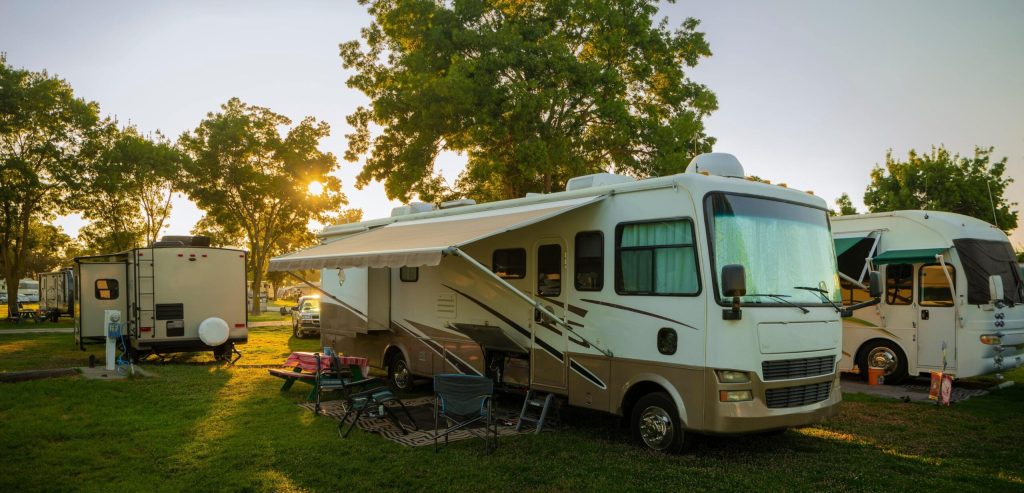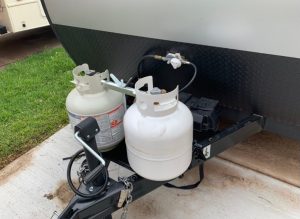
Summer is the perfect season for hitting the road in your RV, trailer, or camper, but it also brings increased fire risks that every traveler should be aware of. High temperatures, dry conditions, and the use of propane, generators, and barbeques can quickly turn a fun trip into a dangerous situation if proper precautions aren’t taken. Whether you’re a seasoned road warrior or a first-time camper, following a few essential fire safety tips can help keep your summer adventures safe and worry-free.
When Transporting Cylinders:
- Ensure propane cylinders are upright and secure during transport.
- Keep cylinder valves closed and protected during transport.
- Plug or cap cylinder outlets during transport.
When Using Cylinders:
- Ensure cylinders are upright and secure on a firm footing.
- Check cylinder connections and hoses for leaks by brushing a 50/50 mix of liquid soap and water onto all connections and hoses. Rising bubbles when you turn on the valve indicate a leak. Tighten connections or repair the hose until there are no bubbles.
- Keep cylinders away from flame, heat, and exits.
Using Propane in your RV or Camper:
- Keep all combustion exhaust vents on the exterior wall of your RV or camper clear of obstructions.
- Use stovetop burners or ovens only for cooking and not as a source of heat.
- Propane appliances require an adequate supply of fresh air for proper combustion. Ensure your RV or camper is properly ventilated to prevent build-up of carbon monoxide.
- Install a carbon monoxide alarm and propane leak detector.
Barbecue Safety:
- Ensure barbecues are on firm, level footing.
- Keep barbecues well away from the side of your RV, camper or tent, and other combustibles.
- Make sure igniter buttons work properly before turning the gas on. If there is no igniter, insert a long match or barbecue lighter through the side burner hole before you turn on the grill controls.
- Keep barbecues clean of grease to prevent flare-ups.
- Stay by the grill when cooking and keep kids and pets at a safe distance.
- Turn off all burner controls and tank valves after each use.
See the Technical Standards and Safety Authority’s website for more safety tips.
